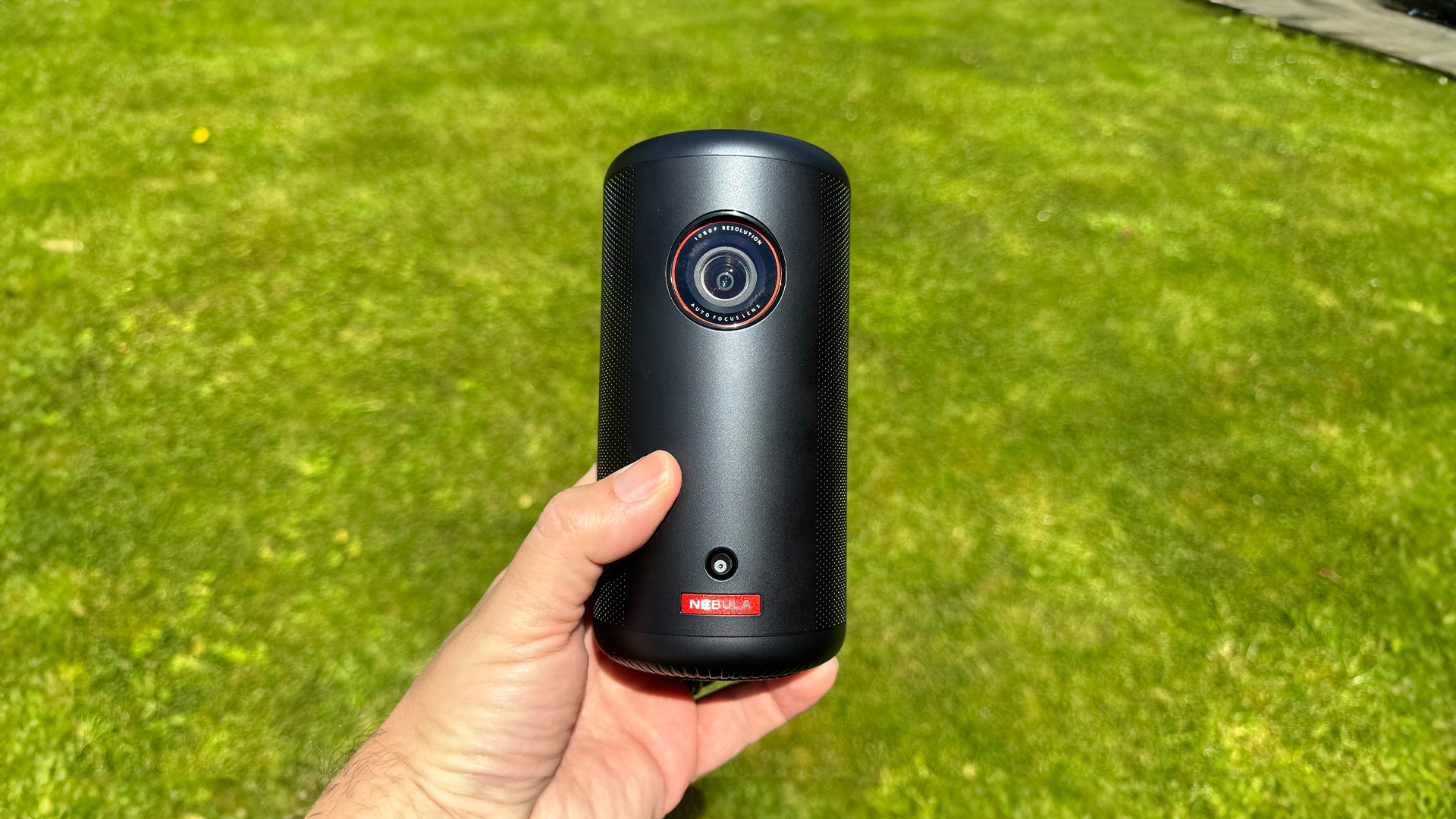
We’re always on the lookout for ways to take our love of music and movies out of the living room. With this in mind, our eye has been well and truly caught by Anker’s Nebula Capsule 3: an ultra-portable battery-powered projector with built-in streaming services that’s also capable of serving as a Bluetooth speaker. Can such a pint-sized product really cram so much in and still deliver the performance goods?
Price
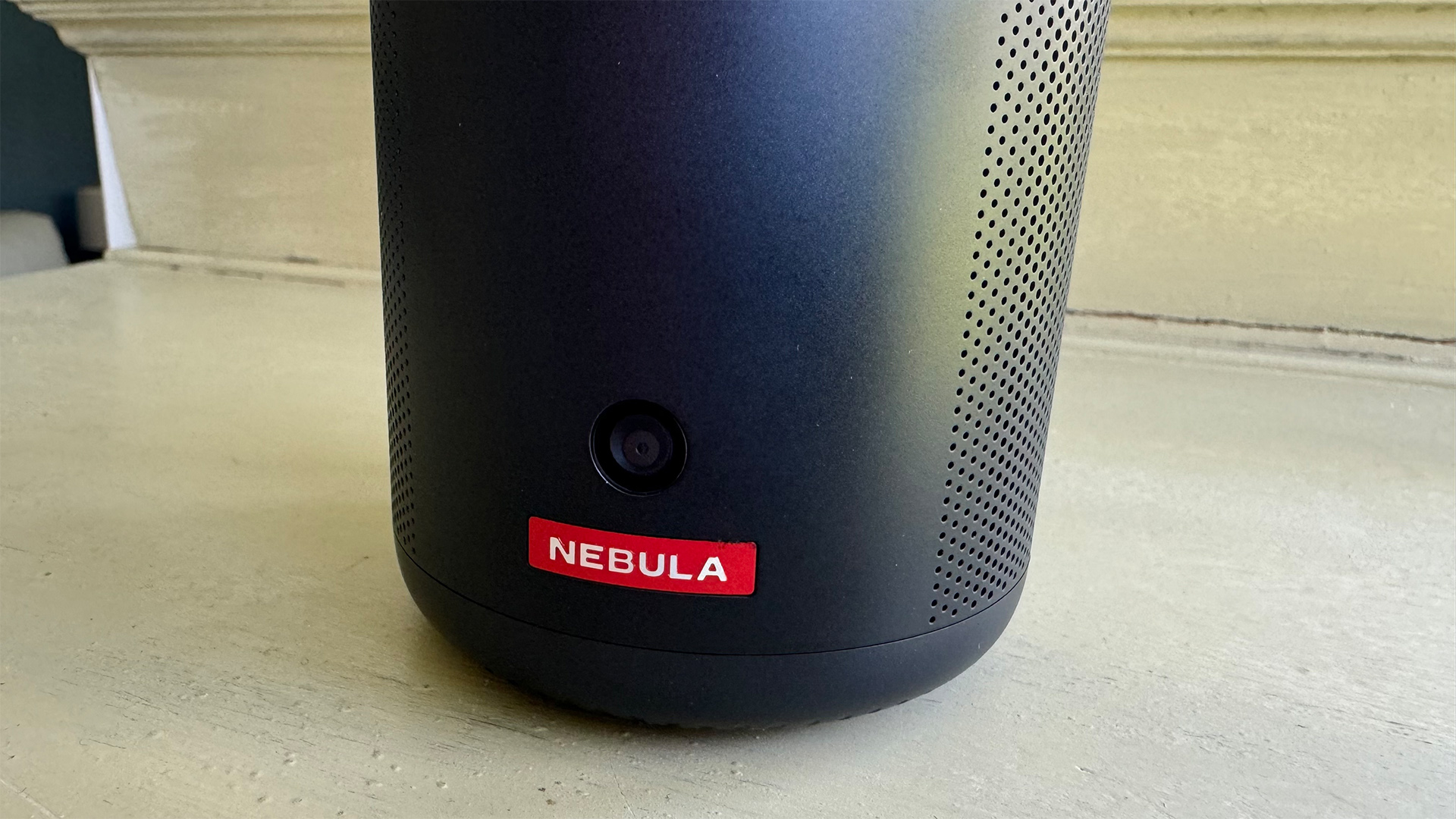
The Nebula Capsule 3 sits toward the upper end of the ultra-portable projector market. It immediately starts to justify its relatively high price, though, through the quality of its design and the number of features it supports. This is definitely not just some dumb lightbox.
It’s also cheaper than the recently tested Anker Nebular Mars 3 Air and the Samsung Freestyle, so there’s plenty of scope for the Capsule 3 to make the £500 / $500 ultra-portable projector category its own.
At the time of writing, this LED version of the Nebula Capsule 3 (Anker also makes a laser-lit version that costs around 50 per cent more) didn’t appear to be available in Australia.
Design
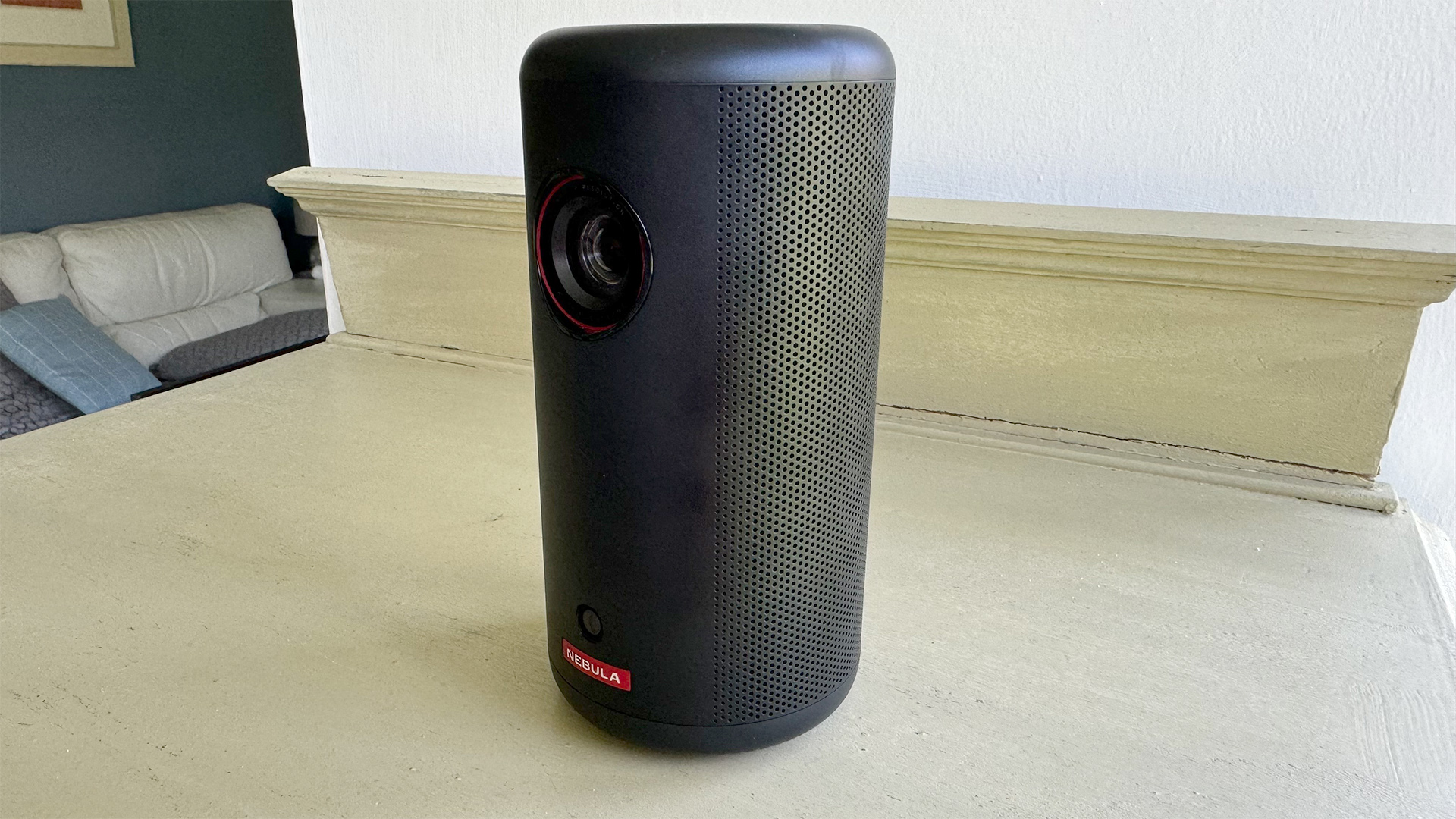
The Nebula Capsule 3 is quite a cutie. With dimensions of just 16 x 8 x 8cm, for starters, it really can fit inside a coat or jacket pocket. Though its impressively robust build quality does mean that it weighs almost a kilogram, so any coat or jacket pocket you put it in will need to be well made.
The two ‘end caps’ of the Capsule 3’s distinctive cylindrical shape are nicely rounded at their edges, and their matt black finish seems to resist scratches and fingerprints well. A grilled finish runs all the way around the main body, giving it a nicely textured look and feel while also providing egress for the projector’s built-in speaker.
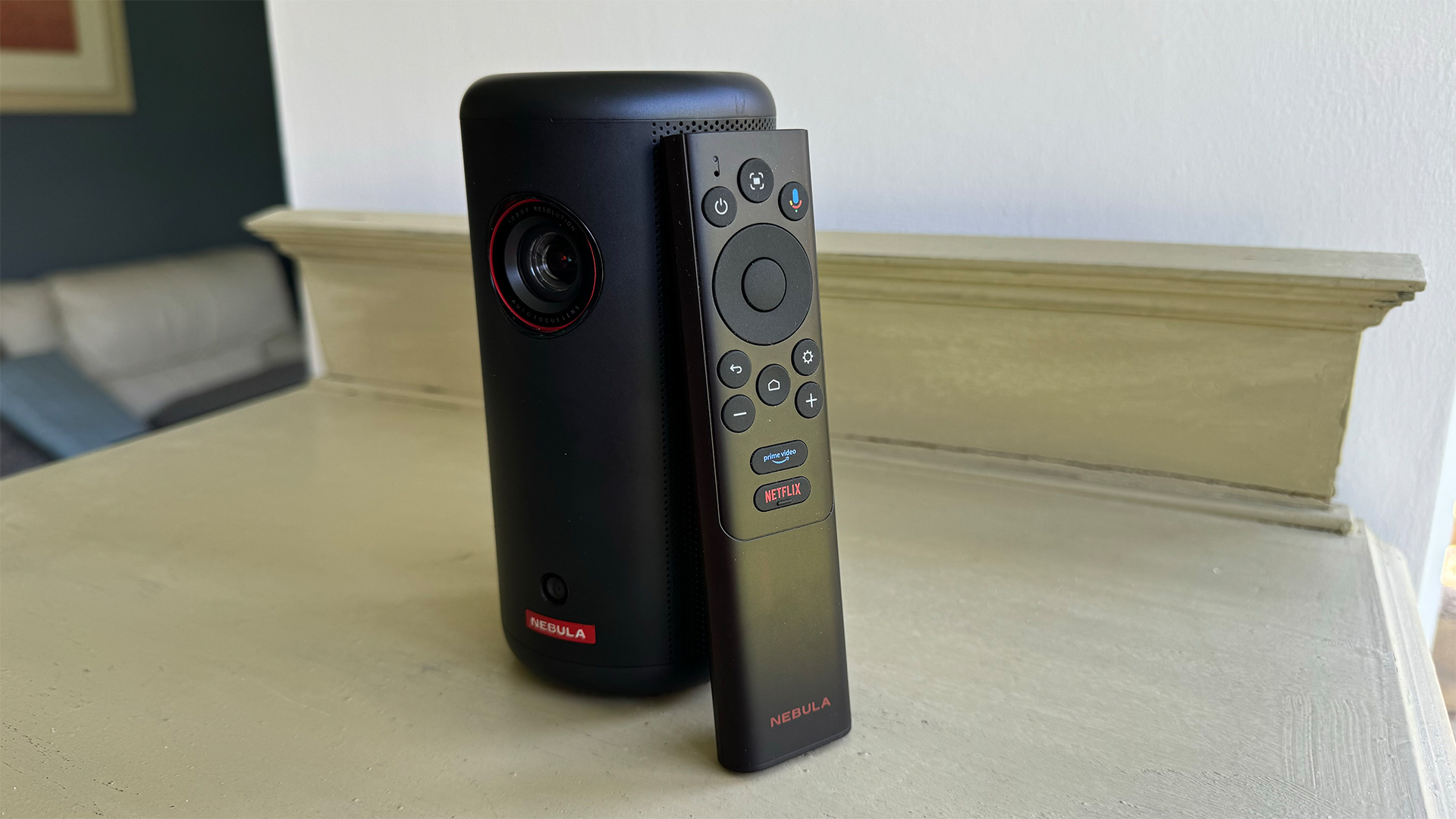
Projector type DLP LED
Processing Intelligent Environment Adaptation 3.0
Screen size 30-120 inches
Native resolution 1080p
Input lag 45.1ms
HDR support HDR10
Dimensions (hwd) 16 x 8 x 8 cm
Weight 950g
The cylinder’s front is defined by a small circular lens opening, into which the lens’s glass front is slightly recessed to protect it from damage. A cool red-orange circle around the lens adds an appealing design highlight that’s repeated by a Nebula logo placed towards the bottom of the front edge.
The Nebula Capsule 3’s rear features an IR receptor for the included remote control, a button to switch the speaker into Bluetooth speaker mode, and the power button. The flat top edge also plays host to an extremely well integrated set of touch controls.
At the bottom of the cylinder’s rear can be found an HDMI input, a USB input, a Type C USB connection for the provided power cable, and an auxiliary input.
The remote control provided with the Capsule 3 is a comfortable, reasonably substantial affair featuring large buttons, a logical layout and, best of all, button backlighting that makes it much easier to use in the sort of dark rooms projectors usually find themselves in.
Features
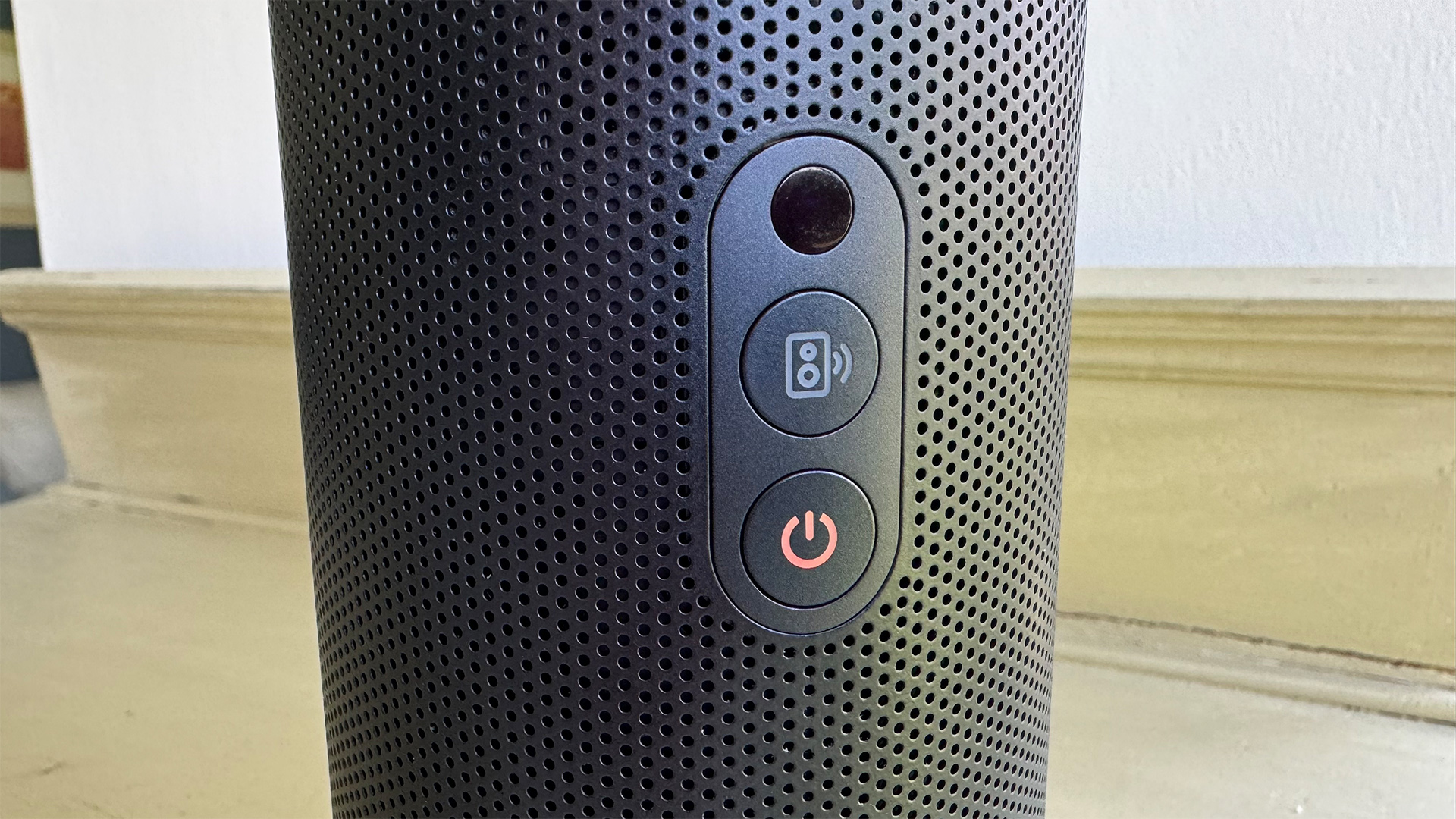
The Nebula Capsule 3 has a lot going on for such a small projector. For starters, it boasts a full HD 1080p resolution, delivered (as we would expect with a pocket projector) by an LED-lit DLP optical system. As noted earlier, Anker also makes a substantially more expensive version of the Nebula Capsule 3 that uses laser lighting to deliver around 50 per cent more brightness.
The LED Nebula Capsule 3 claims 200 nits of brightness, which Anker – rather optimistically, we’d say – claims is enough to to deliver an image as big as 120 inches. Our own experiments suggest that the picture starts to look a bit too dull for comfort, even in a pretty dark room, if you try to push it much beyond 70 inches.
There’s HDR support in the HDR10 format, backed up by a high claimed 90 per cent coverage of the DCI-P3 colour gamut used for most HDR video.
As with the step-up Nebula Mars 3 Air we reviewed recently, the Capsule 3 sports Anker’s Intelligent Environment Adaptation Technology. This is a sophisticated auto set-up system that generates a simple geometrical test screen whenever you fire the projector up after moving it, that the Capsule 3 uses to auto adjust the image’s keystone (geometry) and focus. The system can even detect objects in the projector’s line of sight and automatically try to manoeuvre the image around them.
The Nebula Capsule 3’s flexibility as an ultra-portable projector is bolstered further by a built-in battery capable of giving you a claimed two and a half hours of movie playback, or as much as 10 hours of music on a single charge.
The Capsule 3 doesn’t get a stereo speaker system like the Mars 3 Air does, but its 8W of claimed mono power is quite high by ultra portable projector standards. Its sound is emitted in an almost 360 degree radius from the projector’s cylindrical body, too, and the projector even carries Dolby Audio support to optimise the speaker’s performance.
As well as the physical connections mentioned earlier, the Nebula Capsule 3 can be used as a Bluetooth speaker, supports Google Chromecasting from compatible devices, and carries a fulsome Google TV smart platform that gives you access to many of the world’s most popular video streaming services. In fact, Anker claims that the Capsule 3 is the smallest projector in the world to carry Google TV smarts.
Google TV is, for us, a marked step up from its Android TV predecessor in terms of both its presentation and its reliability. A mic for Google Assistant voice control is built into the Capsule 3’s remote control, and it is also good to see during our tests that Disney+, Netflix, Prime Video and Apple TV all recognise the Capsule 3 as being HDR capable, suggesting that these are nativised apps rather than poor quality generic internet-based apps.
As usual with Google TV, though, there are no BBC iPlayer, ALL4 or Freeview Play apps. If you need these you’ll have to use a streaming stick.
While the Nebula Capsule 3 isn’t pitched specifically as a gaming projector, it does carry a Game Extreme picture preset that can get input lag down to a solid (by projector standards) 45.1ms with a 1080p/60Hz signal. This mode does deactivate the Auto Keystone correction feature, though.
Picture
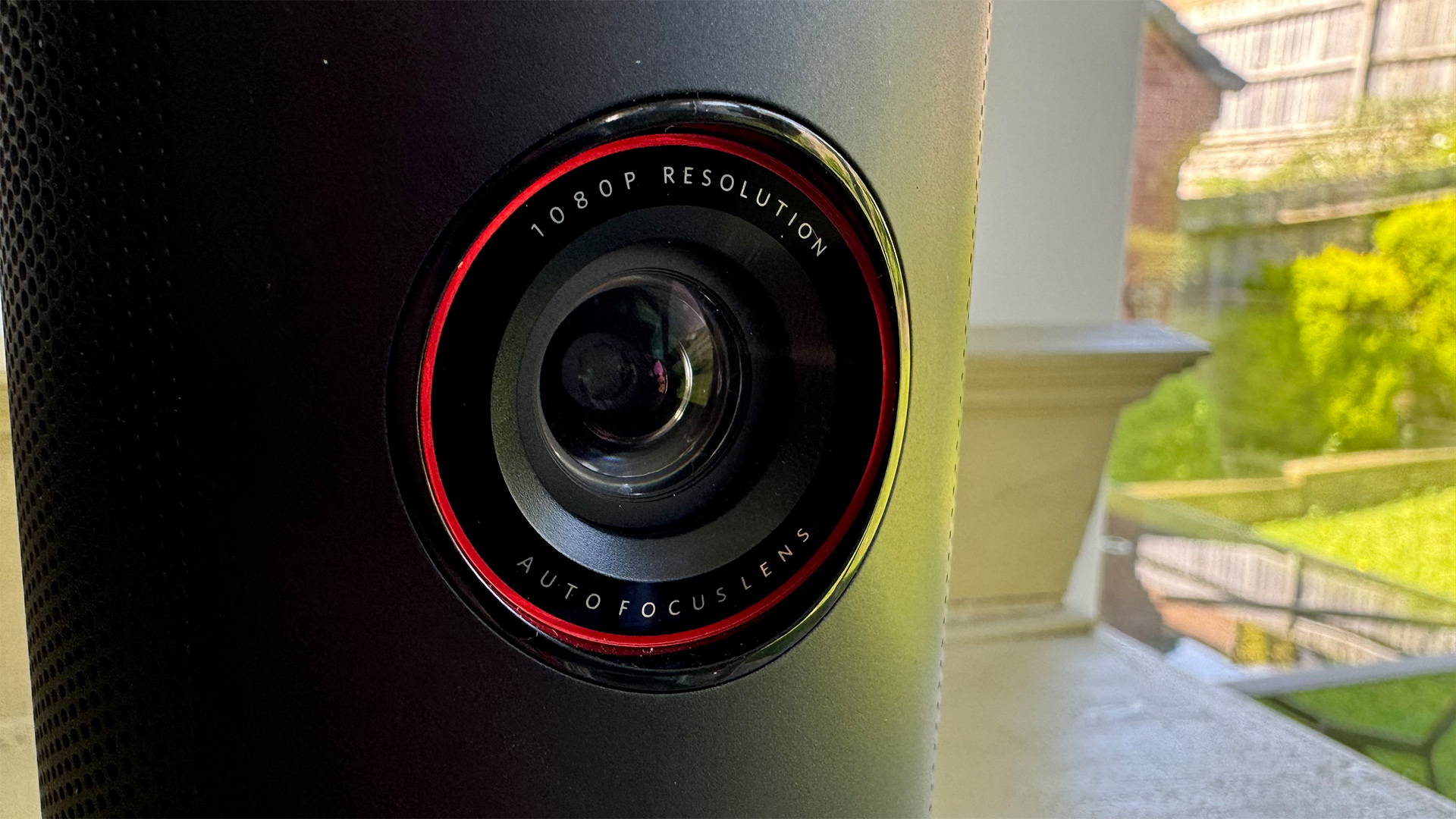
Coming to the Nebula Capsule 3 straight after checking out the step-up Nebular Mars 3 Air, it’s immediately obvious that the smaller, cheaper projector is much less bright. Anker’s own specifications for both projectors state that the Capsule 3 is literally half as bright as the Mars 3 Air, and that’s exactly how it looks.
The repercussions of this are numerous. For starters, it means the Capsule 3 really needs to be used in a fairly dark environment where possible to help its images retain watchable intensity. It also means that images generally, but HDR images especially, don’t have as much ‘pop’ or dynamism.
You’re also more limited in terms of the image size you can stretch to, and dark scenes tend to look a little hollow as the Capsule 3’s lack of brightness means it struggles to pick out some subtle background details. The brightest peaks of HDR sources lack detail too, as the projector ‘clips’ out subtle shading in such areas; and finally, colours aren’t as voluminous and intense as they are on the Mars 3 Air.
While this may look like quite a damning set of limitations, though, we should stress that we are making comparisons with the clearly higher performance and accordingly more expensive Mars 3 Air. Actually 200 nits or so of maximum brightness is pretty common with truly pocket-sized projectors, and the Capsule 3 doesn’t get any less value out of its 200 nits than many of those truly similarly tiny rivals.
In fact, provided you can control light levels in the room or you stick to night time tent viewing, with standard dynamic range sources the Capsule 3 is a really fun watch. Colours enjoy a clearly wider gamut (even if they lack a little volume) than you get with most pocket projectors, yet at the same time the richness doesn’t come at the expense of good subtlety and balance.
This subtlety, together with the native Full HD resolution, helps the Capsule 3 look really crisp and sharp with HD sources too, except for when the slight occasional auto focus error gets in the way. Standard definition sources are up-mapped to the Capsule 3’s HD resolution cleanly and naturally, too.
With SDR the Capsule 3 also outperforms most ultra-portable projectors with its contrast performance, with surprisingly deep, neutral black tones providing a strong enough foundation to the picture to make bright SDR highlights and colours look more intense than you would expect from a 200 lumens projector (provided you haven’t tried to stretch the image size too far).
Unfortunately, the Capsule 3 doesn’t cope so well with HDR. We’ve already said that HDR pictures lack the dynamism and intensity we like to see, but also black levels in HDR mode are nowhere near as good as they are in SDR mode.
In fact, we’d suggest that it’s probably best to think about the Capsule 3 as being an SDR-only projector when it comes to choosing the output video from any sources you connect to the projector. Though you’ll always get HDR played into the projector where it’s available from the built-in streaming apps, of course.
Sound
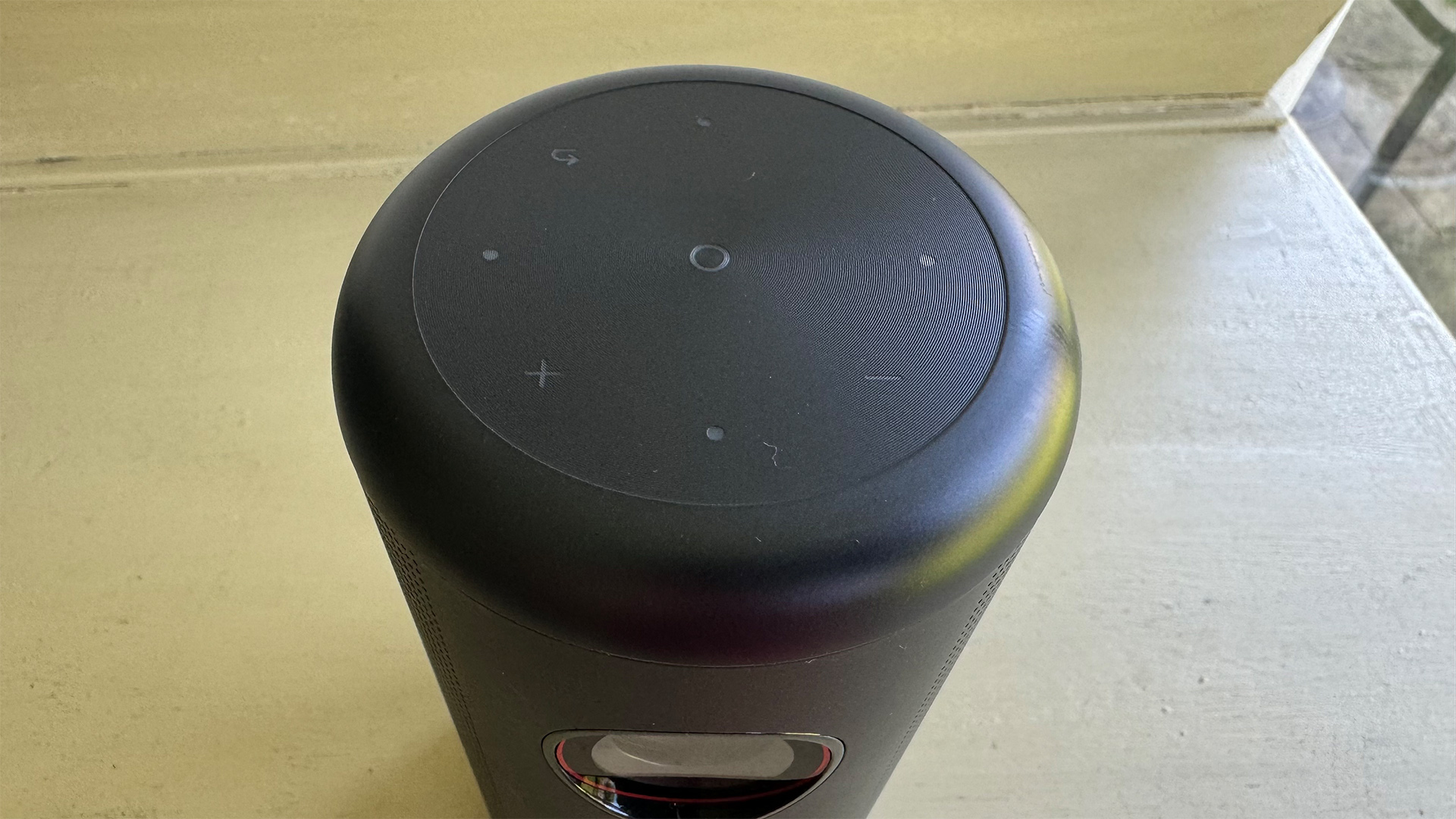
Despite only having a mono speaker, the Nebula Capsule 3 manages to deliver an impressively large and dynamic sound. There’s enough power in the 8W driver to throw the sound out in an almost 360-degree ‘splay’, for starters, helping it avoid that thin, trapped in effect so many projector sound systems suffer with.
The driver is powerful and well made enough to underpin action scenes with more bass than expected, too – and it typically delivers this bass without distortions or an obvious sense of the bass response ‘bottoming out’.
At the other end of the spectrum, treble details and effects enjoy a pleasant rounded tone that again contributes to a fuller, less harsh sound than might have been expected from such a compact device.
The bass can sound a bit detached from the midrange during action scenes, though, and while the 360-degree radiation of the sound helps it avoid sounding cramped, it isn’t driven out of the Capsule 3 powerfully enough, even at maximum volume, to really fill your room. Or make the sound appear convincingly attached to the projector’s distant pictures. At times during dense soundtrack moments, too, you feel like you’re having to strain your ears to pick up what actors are saying. So while the Capsule 3 sounds pretty good by pocket projector standards, it certainly isn’t as immersive with film soundtracks as the larger Nebula Mars 3 Air.
The tone and delivery of the Capsule 3’s audio actually turn out to be better suited to music playback, which sounds punchy and clean enough to mean you really could consider the projector as a casual (though certainly not ‘hi-fi’) portable speaker for a smallish room.
Verdict
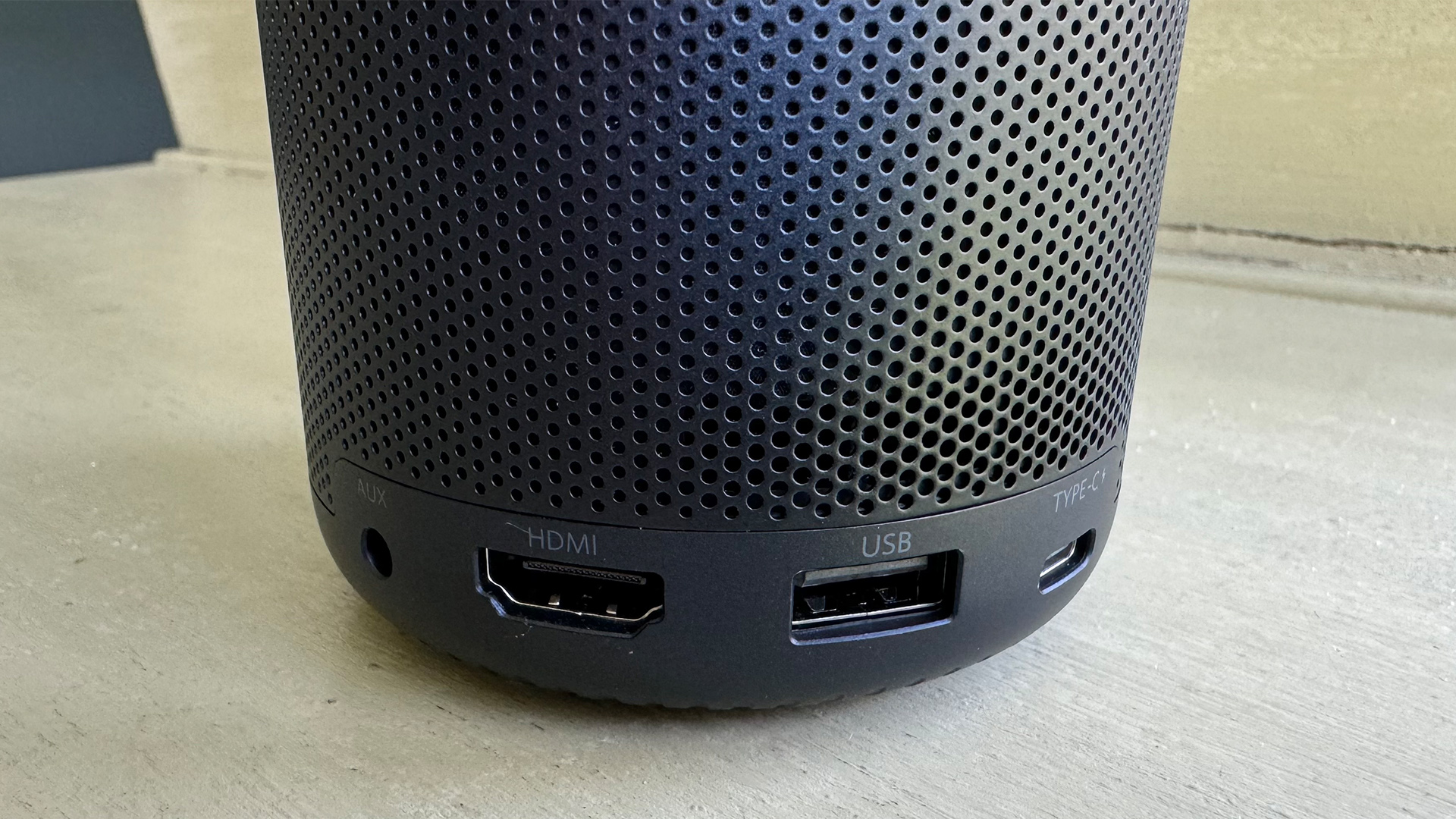
If you really want a projector portable enough to fit in a (large and well made) pocket, Anker’s Nebula Capsule 3 is an attractive and robustly designed if slightly expensive option offering a solid all-round level of performance. If you can cope with the slightly bigger – but still eminently portable – design of the Nebular Mars 3 Air, though, we’d say the substantial performance leap that model gives you for just a little more money makes it the better option.
SCORES
- Picture 3
- Sound 3
- Features 4
MORE:
Read our review of the Anker Nebula Mars 3 Air
Also consider Samsung's The Freestyle
Read our BenQ GS50 review







